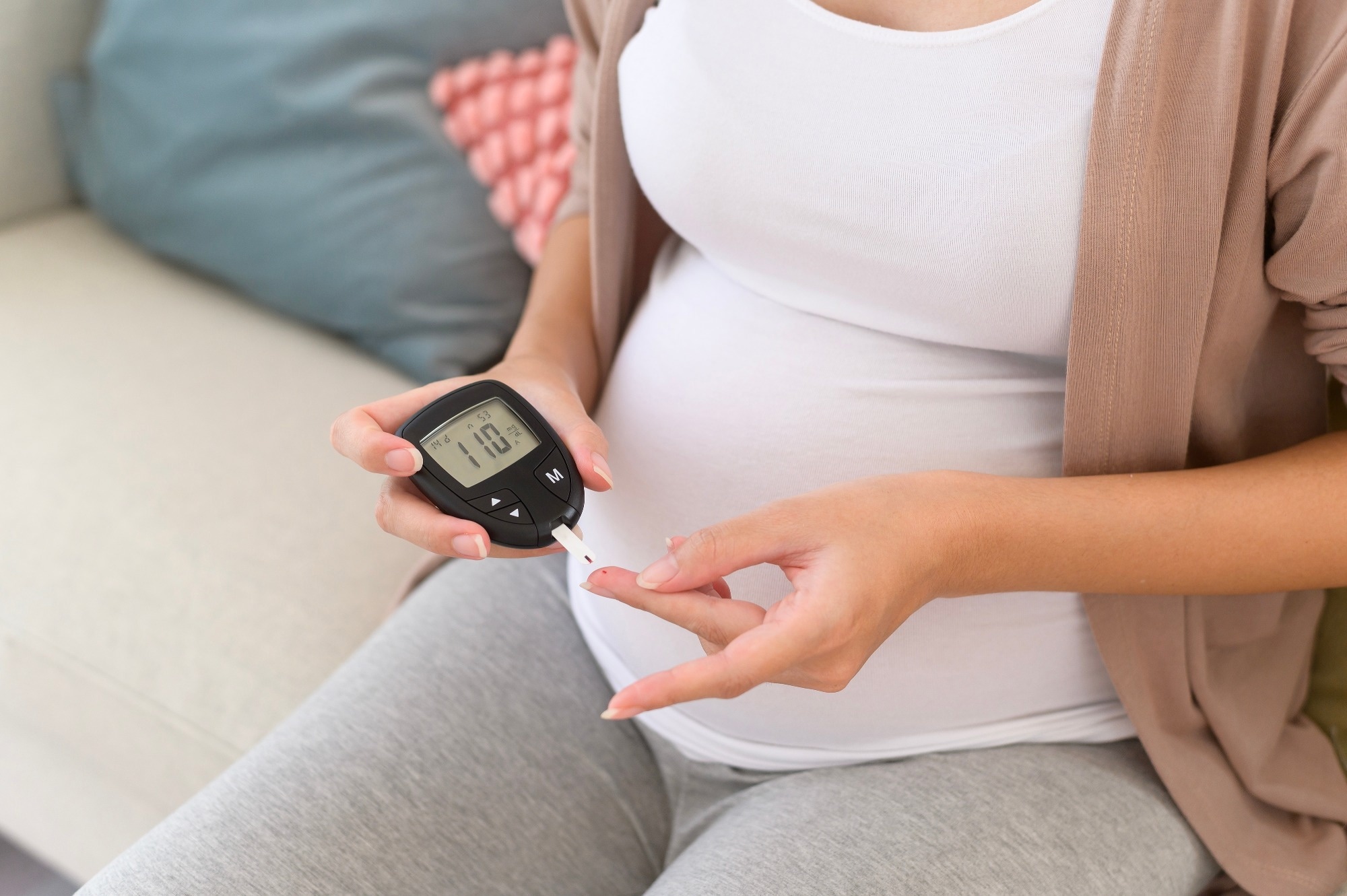A new study using continuous glucose monitors and wearable trackers uncovers a surprising twist in pregnancy health. This shows that more daily movement could mean higher overnight blood sugar, challenging assumptions about exercise and glucose control.
 Study: Daytime physical activity and nighttime glucose levels in individuals with pregnancy hyperglycemia: linking wearable activity trackers to continuous glucose monitoring. Image credit: Thanakorn.P/Shutterstock.com
Study: Daytime physical activity and nighttime glucose levels in individuals with pregnancy hyperglycemia: linking wearable activity trackers to continuous glucose monitoring. Image credit: Thanakorn.P/Shutterstock.com
Pregnancy hyperglycemia increases the risk of large-for-gestational-age (LGA) babies and of type 2 diabetes mellitus in later life. Effective glucose control mitigates these risks. A recent feasibility study, published in Frontiers in Endocrinology, explores how blood glucose levels during the night (midnight to 6 AM) vary with the level of daytime physical activity or sedentary behavior, in women with pregnancy hyperglycemia.
Introduction
Gestational diabetes mellitus (GDM) and gestational glucose intolerance (GGI) are both classed together as pregnancy hyperglycemia. In most patients with high blood glucose levels, the therapeutic goal is to achieve good control of daytime glucose levels. This is often because of the difficulty of measuring nighttime glucose levels.
However, the commonly used morning fasting glucose measurement reflects the nighttime glucose level. Nocturnal hyperglycemia, typically defined as elevated glucose between 12-6 AM, has been linked to LGA births and the need for pharmacologic treatment during pregnancy. Increased fasting glucose concentrations are linked to LGA babies and to the future risk of type 2 diabetes mellitus.
The practical difficulties of tracking nocturnal glycemia are largely overcome by continuous glucose monitoring (CGM). CGM is unique in its ability to evaluate 24-hour blood glucose variations. The development of wearable tracking sensors that monitor 24-hour movement patterns is an advance that, combined with CGM, offers “a powerful, scalable means to assess the dynamic interplay between health behaviors and glucose regulation.”
The current study was a secondary analyses of a feasibility trial on the combined use of CGM and continuous movement devices in this patient population. The scientists performed a secondary analysis of the data from both types of devices, seeking to identify associations between them.
About the study
The study included 13 patients at about 31 weeks of pregnancy. They were monitored for a week with the Dexcom G6 CGM and the ActiGraph Insight Watch (a continuous movement device). The former records interstitial glucose levels every five minutes. In this study, the nighttime values collected by CGM were included.
Physical activity was graded as light physical activity (LPA), moderate-to-vigorous physical activity (MVPA), and sedentary behavior (SED). A model converted the activity data into metabolic equivalents of task (METs) for the periods during which the individual wore the monitoring device. At least 600 minutes of valid recording on the activity monitor was required for inclusion in the analysis.
Nighttime glucose levels were graphed to show the percentage of total recording time when the mean glucose concentrations remained in the normal range, and the area under the curve (AUC) was derived.
Study findings
Most participants were White, with a median of 61 minutes of MVPA vs 456 minutes (7.6 hours) of SED. In this cohort, the median for mean nighttime glucose levels was 91, while glucose values remained in range 85% of the time. Thus, the percentage of time in range (%TIR; 60–99 mg/dL) was 85%.
Values falling outside the range were mostly those that were above 99 mg/dL, with <1% of test values being below range.
After adjusting for gestational age and device wear time, the researchers found that the mean glucose concentration increased by 0.86 mg/dL with each ten-minute addition to total MVPA. Similarly, an increase in AUC of 313 mg/dL occurred with this level of increase in MVPA. Similar trends were absent with LPA or sedentary behavior.
These findings contradict current evidence from daytime readings, where increased physical activity reduces blood glucose levels in individuals with hyperglycemia. This requires further research into the altered interaction of hormonal and physiological changes in pregnancy with activity patterns, especially as sedentary behavior or light physical activity did not predict nighttime glucose levels.
One possible reason for this unexpected finding is that people who move more vigorously during the daytime may eat more afterwards, especially carbohydrates. This hypothesis could not be tested due to the lack of accurate dietary data. Future studies should use objective dietary assessments to identify how this affects the interaction between physical activity and blood glucose control.
Another possibility is that the participants had disturbed sleep, which adversely affects blood glucose regulation. Either way, it is important to validate and address this pattern because high nighttime glucose levels increase LGA risk, and are more likely to predict severe hyperglycemia and future diabetes risk
Conclusions
This is the first study to combine CGM and activity sensors to explore associations between nighttime blood glucose levels (rather than daytime glucose monitoring) and daytime behavioral patterns. This adds precision to the association.
The study demonstrates the feasibility of combining these technologies to provide data that could guide tailored adaptive feedback systems.
Improvements in glucose and activity monitoring technology hold great promise for improving scientific and clinical understanding and supporting the development of personalized, data-driven glucose management tools during pregnancy.
Future research should include a larger sample size, besides continuous dietary and sleep assessments, coupled with CGM and behavioral monitoring.
The authors suggest that using phone cameras to record meal and self-reported data, could capture 24-hour lifestyle patterns more effectively. This would shed light on the complex interrelationships of sleep, dietary factors, biological rhythms, and glucose regulation in pregnancy.
Download your PDF copy now!